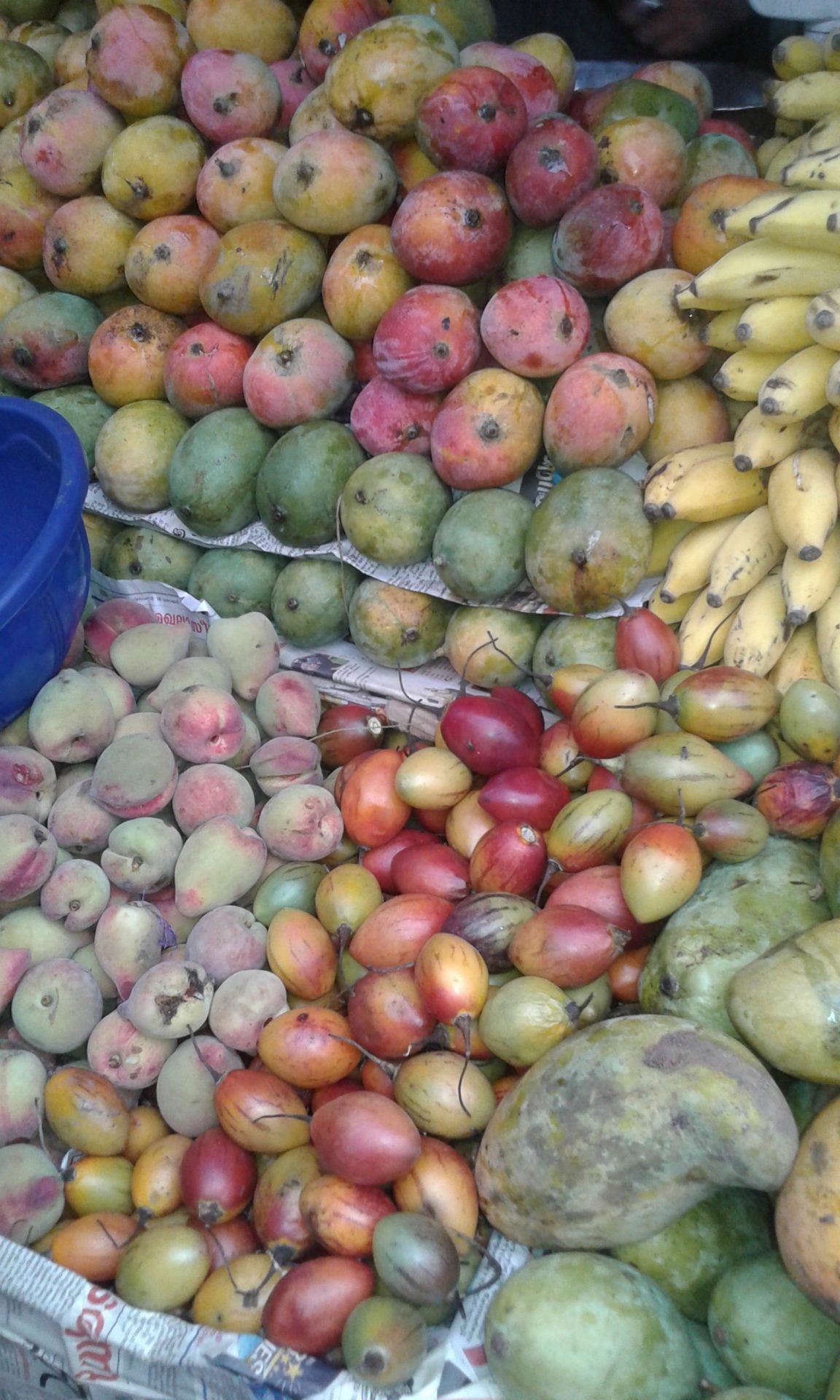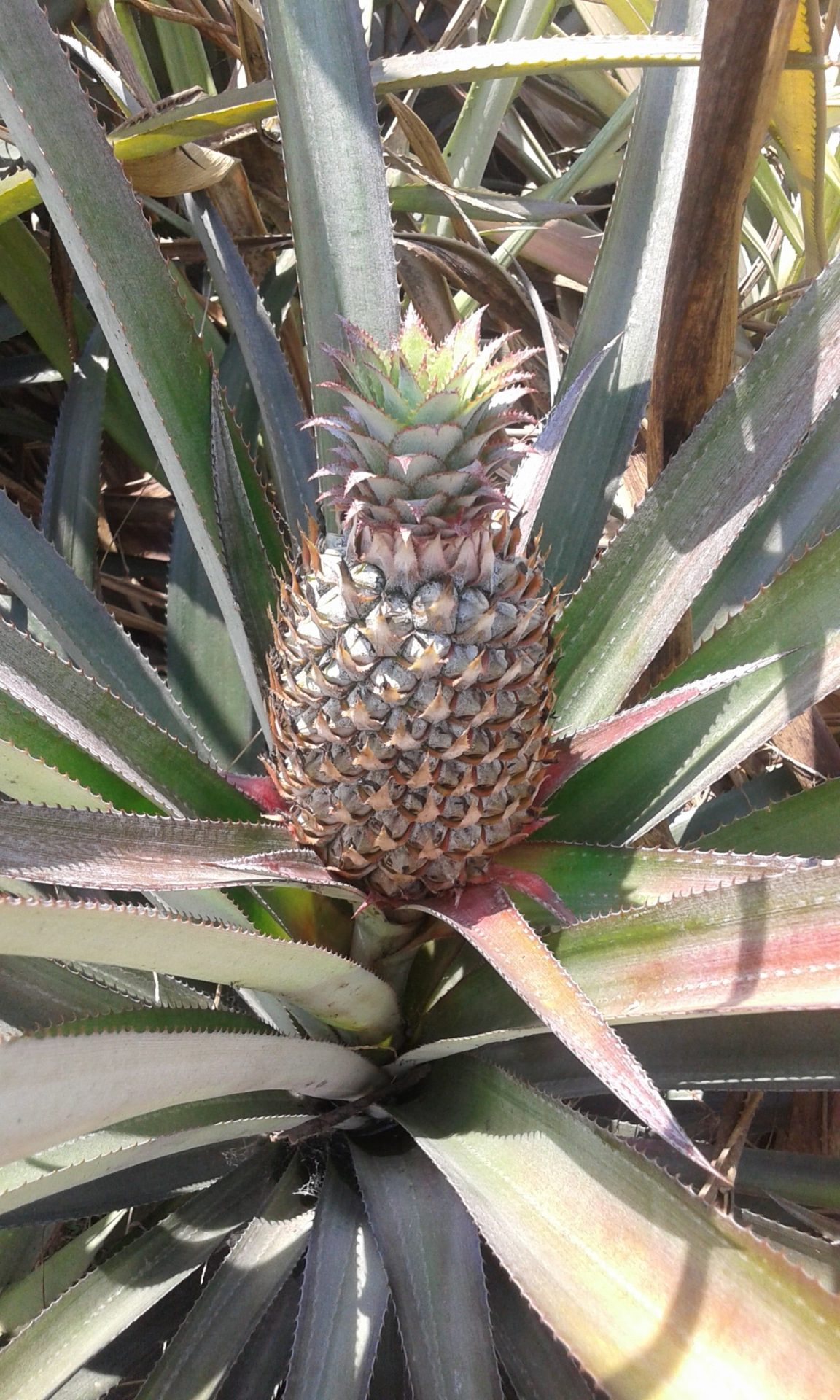
The fruit offer in India is varied, regional and above all seasonal.
Indian fruit stalls are filled with numerous different varieties and often there are fruit sellers who specialize only in one very special fruit variety.

So if you travel to India, you don’t have to worry about your vitamin intake. But an important rule remains in place and that is: Peel it or leave it! This rule should be a top priority, especially for newly arrived Indian travellers. But if you stick to it, you can enjoy!

Mango (Aam)– The Indian fruit par excellence and even when I speak of “the mango”, I make a mistake. Because there is not only the ONE MANGO, but hundreds of different varieties. Small, large, green, yellow, red, sour, sweet, ripe and raw.
Mango season is from April to July and depending on the time, a different variety is ready for harvesting.

Banana (Kela)– Bananas are everywhere and all year round available in India. In many places, this are medium-sized yellow bananas, which, unlike in Germany, has riped on the tree.
But if you travel to the southern states, such as Kerala or Tamil Nadu, you can hardly believe what you see. Here, the most diverse types of bananas hang in bulks on thick ribbons from the fruit shops. From small baby bananas, thick red meaty bananas, to plantains, to savoury bananas (out of which one can make banana chips) – kerala has them all.

Pineapple (Ananas)– Pineapple is called Ananas in Hindi and grows in plantations in southern India all year round. So you can get fresh pineapples on the way during your Kerala trip! Let the shop keeper cut it right away.

Custard Apple (Sita Fall)– “Fall” means “fruit” in Hindi and Sita is an Indian goddess. Apparently Sita likes this funny fruit, which consists of several segments and has many seeds covered by the flesh of the fruit. From the outside, the fruit resembles a greenish dinosaur skin. You just have to try them. Season is from October to February.
Guava (Amruth)– The yellowish-green ball-round fruits have a pleasant sweet-sour taste and can be eaten like apples. Inside, they are either yellow or red and have many edible seeds. Season is September to November.
Sapodilla fruit (Chiku)– When I first came into contact with Chikus in India, I cooked the fruits completely with the skinn, assuming they were small new potatoes. When I cooked them for hours and they just didn’t soften, my Indian hostess finally explained to me that the small round fruits with brown skinn was an Indian fruit.
When the chikus are ripe, they are also softer with a stone in the middle and very sweet. Indians love the fruit in milkshakes- and me too!

Lychee (Lychi)– What a joy it was, when I noticed that lychees are growing on trees in India! You don’t buy them individually but in batches in kilos! The season is only short from May to June and you should try them.
Sharon Fruit (Japani Fall)– This is one of my favorite fruits, that is found during the late autumn season, especially in northern India and the Himalayan region! There are two variations, a smaller one that is edible even when unripe, and a larger fruit that must be fully ripe, otherwise it is astringent and leaves a funny feel on your toungue.

Melons (Karbuch), Grapes (Angur), oranges (Santra), papaya (Papita), pomegranate (Anar)– All these subtropical fruits are of course also available in India, but again strongly seasonal! During the monsoon season from July to August, the offer is rather meager, but during the rest of the year there should be a good fruit offer.

Strawberries, plums, cherries, apricots, pears, peaches, apples– you can’t believe it, but our supposedly native fruits are available in the Himalayan region of Himachal Pradesh state as well! Here there are mainly apple orchards, where the apples are sent for sale all over India. But there are also numerous apricot trees, because the valuable apricot oil, whichg is still extracted by hand, is sold as well.





